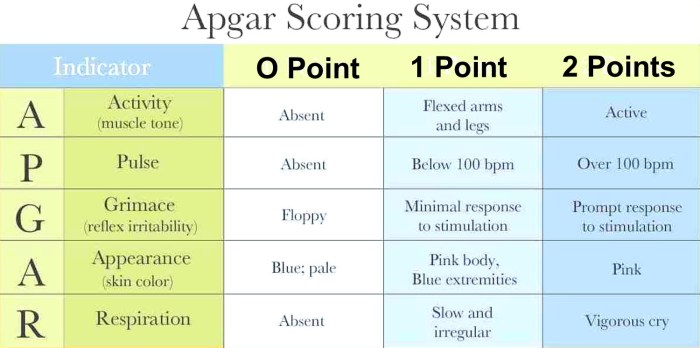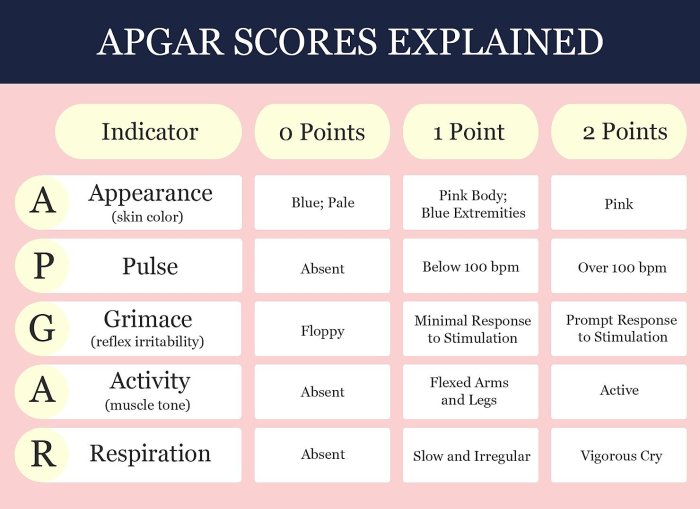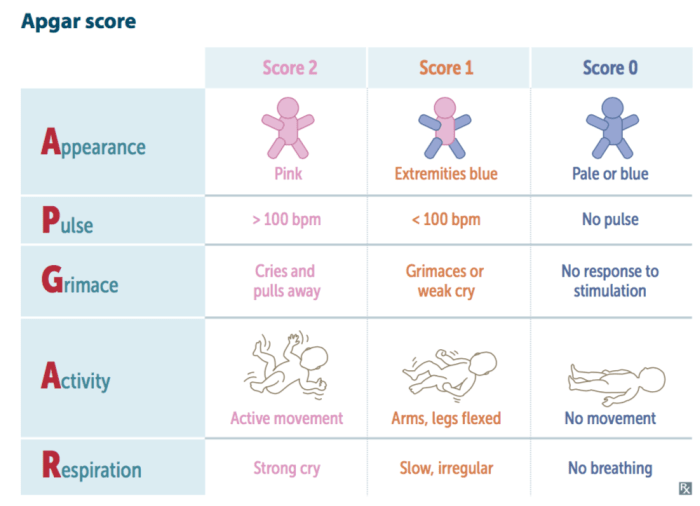At the heart of medical advancements lies the newborn test creator crossword clue, a cryptic yet insightful reference to the crucial process of newborn screening. This comprehensive guide delves into the intricate world of newborn testing, shedding light on its purpose, types, and profound impact on the health and well-being of infants.
Newborn testing stands as a cornerstone of preventive healthcare, empowering healthcare professionals with the tools to identify and address potential health concerns early on. By understanding the significance and nuances of newborn testing, we can harness its power to safeguard the health of future generations.
Medical Procedure

Newborn testing is a crucial medical procedure performed on newborns shortly after birth to screen for various health conditions that may not be apparent at birth.
These tests play a vital role in early detection and timely intervention, ensuring the well-being and long-term health of newborns.
Types of Newborn Tests
Newborn tests encompass a range of screening methods, each targeting specific health conditions. Some common types include:
- Metabolic Screening:Detects rare metabolic disorders that can lead to severe health issues if left untreated.
- Hearing Screening:Assesses hearing ability to identify potential hearing loss, which can affect speech and language development.
- Pulse Oximetry Screening:Measures oxygen levels in the blood to screen for congenital heart defects and other respiratory conditions.
- Genetic Screening:Identifies genetic disorders that may not be evident at birth, allowing for early diagnosis and appropriate management.
Step-by-Step Guide to Performing a Newborn Test
The procedure for performing a newborn test typically involves the following steps:
- Collection of Samples:A small sample of blood, urine, or saliva is collected from the newborn.
- Laboratory Analysis:The samples are sent to a laboratory for analysis using advanced testing methods.
- Interpretation of Results:Trained medical professionals interpret the test results and determine if any health conditions are present.
- Follow-Up:If a test result indicates a potential health issue, further testing and evaluation may be necessary to confirm the diagnosis and initiate appropriate treatment.
Importance of Newborn Testing
Newborn testing is a critical component of preventive healthcare, playing a pivotal role in the early identification and management of genetic disorders and birth defects.
Statistics reveal that approximately 3% of newborns are affected by genetic disorders or birth defects, highlighting the significance of comprehensive screening programs.
Prevalence of Genetic Disorders and Birth Defects
- Cystic fibrosis affects 1 in 2,500 newborns.
- Sickle cell disease affects 1 in 500 African American newborns.
- Down syndrome occurs in approximately 1 in 700 newborns.
Early Identification and Treatment
Newborn testing enables the early detection of treatable conditions, allowing for prompt intervention and management.
For example, early diagnosis and treatment of hypothyroidism can prevent intellectual disability and developmental delays.
Potential Long-Term Benefits
Newborn testing has far-reaching benefits, including:
- Improved health outcomes and reduced morbidity
- Early access to appropriate medical care
- Prevention of disability and lifelong complications
Types of Newborn Tests: Newborn Test Creator Crossword Clue

Newborn testing involves a range of procedures to screen for potential health conditions in newborns. These tests are crucial for early detection and intervention, ensuring optimal health outcomes.
Various types of newborn tests are performed, each targeting specific health concerns. These tests can be categorized into the following groups:
Blood Tests
Blood tests are commonly performed on newborns to assess overall health and identify potential metabolic disorders. These tests involve collecting a small blood sample from the baby’s heel or vein.
- Complete Blood Count (CBC):Measures the levels of red blood cells, white blood cells, and platelets, providing insights into overall blood health and potential infections.
- Blood Type and Rh Factor:Determines the baby’s blood type and Rh factor, which is important for blood transfusions and preventing Rh incompatibility.
- Metabolic Screening:Screens for inherited metabolic disorders, such as phenylketonuria (PKU) and hypothyroidism, which can lead to developmental issues if left untreated.
Hearing Tests
Hearing tests are essential for detecting hearing loss in newborns, which can affect language development and overall communication skills.
- Otoacoustic Emissions (OAE):Measures the sounds produced by the inner ear in response to clicks or tones, indicating normal hearing function.
- Auditory Brainstem Response (ABR):Records electrical signals in the brainstem in response to sounds, providing information about hearing sensitivity and nerve function.
Metabolic Tests
Metabolic tests evaluate the baby’s ability to process and utilize nutrients. These tests can identify inherited disorders that can lead to health complications if not managed properly.
- Galactosemia Screening:Detects galactosemia, a condition where the body cannot metabolize galactose, a sugar found in milk and dairy products.
- Biotinidase Deficiency Screening:Identifies biotinidase deficiency, a rare disorder that affects the body’s ability to utilize biotin, an essential vitamin.
Genetic Tests
Genetic tests analyze the baby’s DNA to identify genetic conditions or predispositions. These tests are typically performed when there is a family history of genetic disorders or when specific risk factors are present.
- Cystic Fibrosis Screening:Detects cystic fibrosis, a genetic disorder that affects the lungs and digestive system.
- Sickle Cell Disease Screening:Identifies sickle cell disease, an inherited blood disorder that affects the shape and function of red blood cells.
Interpreting Newborn Test Results

Interpreting newborn test results is a critical step in ensuring the health and well-being of infants. These tests screen for a wide range of conditions, and understanding the results is essential for appropriate follow-up care and treatment.
Newborn test results are typically reported as either positive or negative. A positive result indicates that the test has detected a potential abnormality or risk factor. However, it’s important to note that a positive result does not necessarily mean that the baby has a condition.
Further testing and evaluation may be necessary to confirm the diagnosis.
A negative result, on the other hand, indicates that the test did not detect any abnormalities. This does not guarantee that the baby is free from all health conditions, but it does reduce the likelihood of certain conditions being present.
Follow-up Testing and Counseling
Depending on the newborn test results, follow-up testing or counseling may be recommended. This is especially important for positive results or when there are concerns about the baby’s health. Follow-up testing may involve additional blood tests, imaging studies, or genetic testing to confirm a diagnosis or monitor the baby’s condition.
Counseling is also an important part of interpreting newborn test results. Healthcare providers can provide information about the potential implications of the results, discuss treatment options, and offer support to families. They can also address any concerns or questions that parents may have.
Controversies and Ethical Considerations
Newborn testing has sparked ethical debates and controversies, primarily concerning the following aspects:
Mandatory vs. Voluntary Testing
One of the most significant controversies is whether newborn testing should be mandatory or voluntary. Advocates of mandatory testing argue that it is essential for early detection and treatment of serious conditions, potentially saving lives and improving outcomes. They contend that it is the responsibility of society to ensure that all newborns have access to essential health screenings.Opponents
of mandatory testing, on the other hand, raise concerns about privacy, parental autonomy, and potential discrimination. They argue that parents should have the right to decide whether their child undergoes testing and that mandatory testing may lead to unnecessary anxiety, invasive procedures, and even stigmatization based on test results.
Potential Impact on Families and Society, Newborn test creator crossword clue
Newborn testing has the potential to impact families and society in various ways. Positive outcomes include early identification of treatable conditions, allowing for timely intervention and potentially reducing long-term health consequences. However, false-positive or inconclusive test results can cause unnecessary anxiety and distress for families, as well as potential financial burdens associated with further testing and follow-up care.Moreover,
newborn testing data can be used for research and public health purposes, which raises concerns about data privacy and the potential for discrimination based on genetic information. It is essential to ensure that newborn testing programs are conducted ethically, with appropriate safeguards in place to protect individual privacy and prevent misuse of data.
FAQ Explained
What is the purpose of newborn testing?
Newborn testing aims to identify potential health conditions in newborns that may not be evident at birth, allowing for early intervention and treatment.
What are the different types of newborn tests?
Newborn tests encompass a range of screening methods, including blood tests, hearing tests, metabolic tests, and genetic tests, each designed to detect specific health conditions.
Why is newborn testing important?
Newborn testing is crucial as it enables the early detection and management of health conditions, potentially preventing severe complications and improving long-term outcomes.